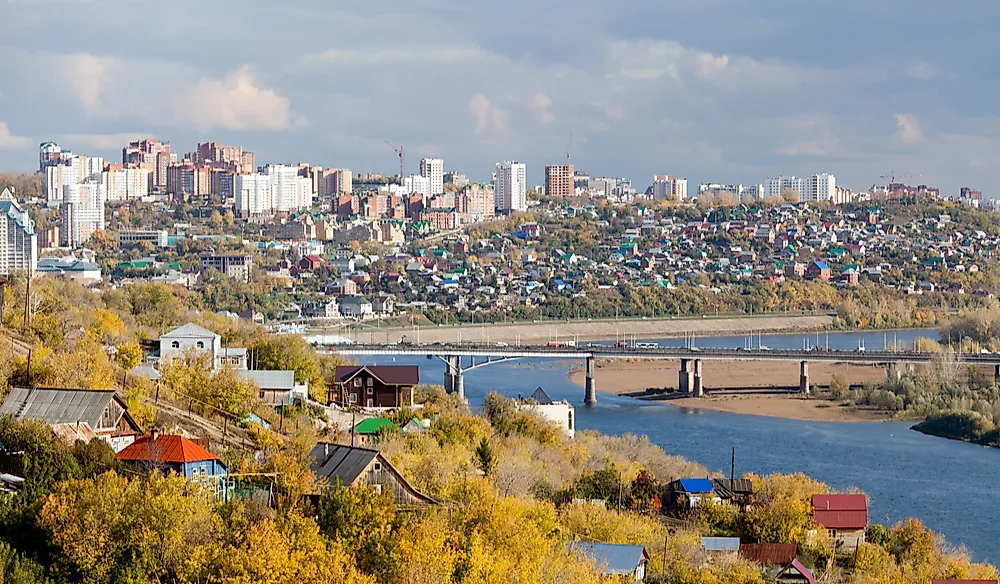What Is The Capital Of The Bashkortostan Republic Of Russia?

The Republic of Bashkortostan is a federal subject of Russia. With an area of 143,600 km2 and an estimated population of 4,072,292, Bashkortostan ranks as Russia's 27th most extensive and most populous republic. Also known as Bashkiria, as it was named after the Bashkirs people, the Republic of Bashkortostan is located between the Volga River and the Ural Mountains. Administratively, Bashkortostan is part of the Volga Federal District and its capital city is Ufa. Other cities in the republic include Ishimbuy, Kumertau, Neftekamsk, Salavat, Sibai, Sterlitamak, Oktyabrsky, Mesyagutovo, and Beloretsk.
Capital of Bashkortostan: Ufa
Ufa is the capital of the Republic of Bashkortostan. The city has an estimated population of 1,062,319, ranking as the 11th most populous city in Russia. Ufa is located near the boundary between Eastern Europe and Asia, and experiences a continental characterized by cold winters and warm summers. Ufa was founded in 1574 and gained city status in 1586. The most common religions practiced in the city are Russian Orthodoxy and Sunni Islam.
History of Ufa
The history of habitation in the area near Ufa dates back to the Paleolithic era, while a medieval city existed in Ufa's current location between the 5th and 16th century. According to some maps created during this period, the city was named Pascherti, although Tunisian historian Ibn Khaldun referred to the city as Bashkort. Ufa is believed to have been first inhabited by the Bashkirs peoples, and the creation of a fortress in its present location in 1574 is considered to mark the city’s founding. The settlement was later granted city status and became a separate Ufa Governorate in 1781. However, in 1802, the city rejoined Orenburg to form the Orenburg Governorate, which is now part of the Republic of Bashkortostan, Chelyabinsk Oblast, and Orenburg Oblast. The general plan of the city was created in the early 1800s by Russian-Scottish architect William Heste.
Economy of Ufa
The economy of Ufa is primarily driven by the mechanical and petroleum industries. The city’s economy grew significantly during the 20th century due to the development of the Volga-Urals oil field. Other industries that drive Ufa’s economic growth include timber processing, food, and engineering. The city’s economy also benefits from the Trans-Siberian Railway, a major railway in Russia that runs through the city. Additionally, Ufa is connected by two national highways, the M5 and M7, and Ufa International Airport, which provides regular flights to St. Petersburg, Moscow, Beijing, Barcelona, Irkutsk, and Yekaterinburg. As a result, Ufa has developed into an important transport hub. Tourism is also an important economic sector in Ufa. Popular destinations for visitors include the Ufa Art Gallery, Museum of Geology and Mineral Resources of the Republic of Bashkortostan, Bashkir State Opera and Ballet Theater, National Museum of Military Glory, Ufa State Tatar Theater, Bashkir State Puppet Theater, and the Ural Gallery among others. Ufa also receives a large number of tourists due to its rich cultural and historic heritage.











